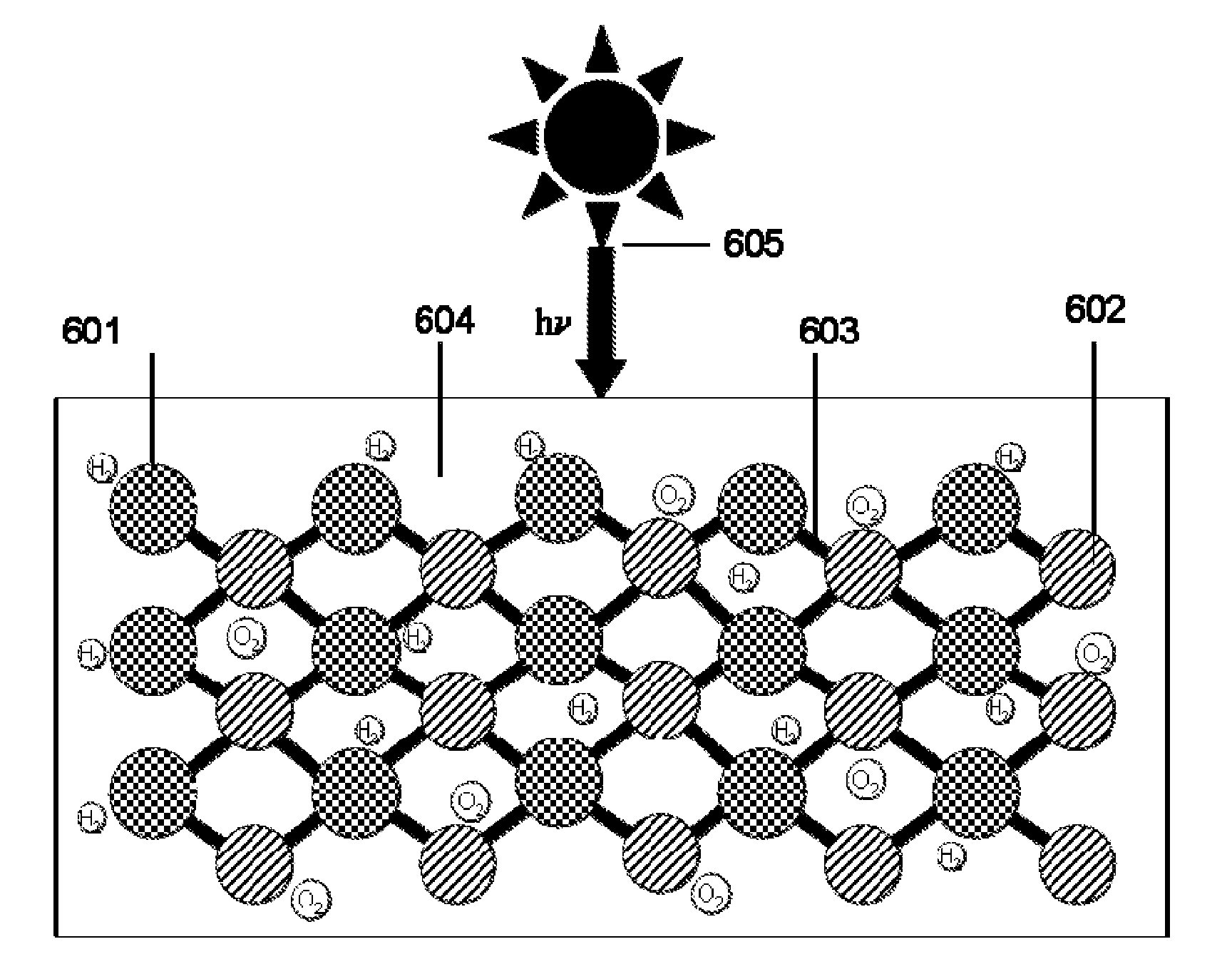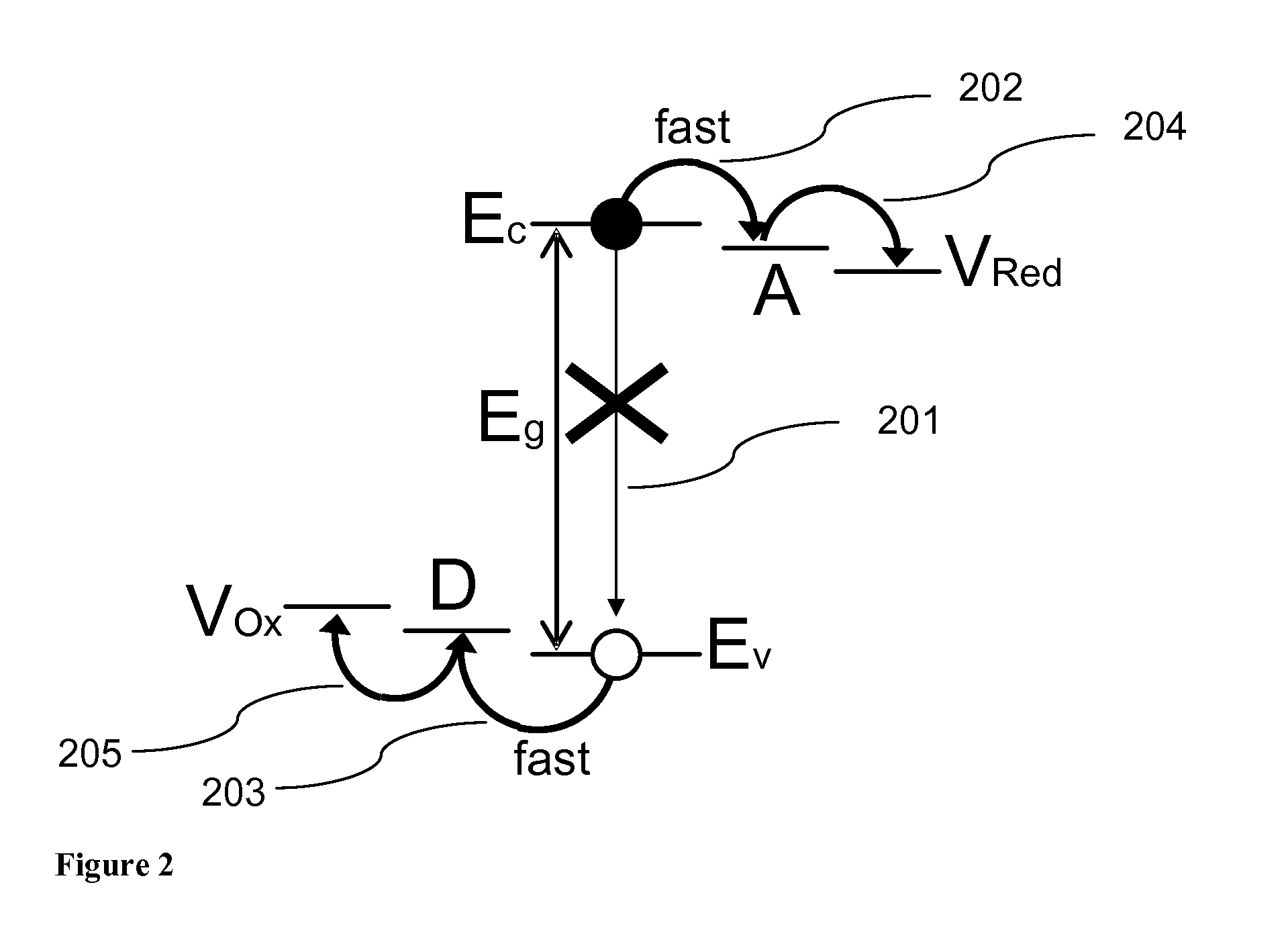System and method for direct conversion of solar energy to chemical energy
a technology of solar energy and chemical energy, applied in the field of system and method of converting solar energy into chemical energy, can solve the problems of imposing unnecessary limits on the use and storage of solar energy, reducing overall efficiency, and only 4% of solar radiation received at the surface of the earth by ultraviolet light, so as to increase the efficiency and reliability of photoelectrochemical cells, reduce losses, and reduce the effect of loss
- Summary
- Abstract
- Description
- Claims
- Application Information
AI Technical Summary
Benefits of technology
Problems solved by technology
Method used
Image
Examples
Embodiment Construction
[0050]FIG. 3 shows an example non-limiting illustrative coupled nanocrystal photoelectrochemical cell. In this unit two different nanocrystals, nanocrystal 1 (301) and nanocrystal 2 (302) are linked through a shared ligand (303). In addition to the shared ligand, there may be other ligands or capping agents on the surfaces of the nanocrystal 1 and nanocrystal 2. These ligands (304) may be the same or different for each nanocrystal. Both nanocrystals absorb photons (305) from sunlight.
[0051]One exemplary non-limiting illustrative embodiment provides a photoelectrochemical system based on colloidal nanocrystals of two different semiconductors, nanocrystal 1 (NC1) and nanocrystal 2 (NC2), coupled by a “shared ligand” (SL) as shown in FIG. 3 to produce chemical energy.
[0052]FIGS. 4a and 4b show an example illustrative non-limiting energy level diagram for a coupled nanocrystal photoelectrochemical cell. Photons (401) with energy greater than the band gap of the respective nanocrystals, ...
PUM
| Property | Measurement | Unit |
|---|---|---|
| semiconductor | aaaaa | aaaaa |
| band edge energy | aaaaa | aaaaa |
| energy | aaaaa | aaaaa |
Abstract
Description
Claims
Application Information
 Login to View More
Login to View More - R&D
- Intellectual Property
- Life Sciences
- Materials
- Tech Scout
- Unparalleled Data Quality
- Higher Quality Content
- 60% Fewer Hallucinations
Browse by: Latest US Patents, China's latest patents, Technical Efficacy Thesaurus, Application Domain, Technology Topic, Popular Technical Reports.
© 2025 PatSnap. All rights reserved.Legal|Privacy policy|Modern Slavery Act Transparency Statement|Sitemap|About US| Contact US: help@patsnap.com



